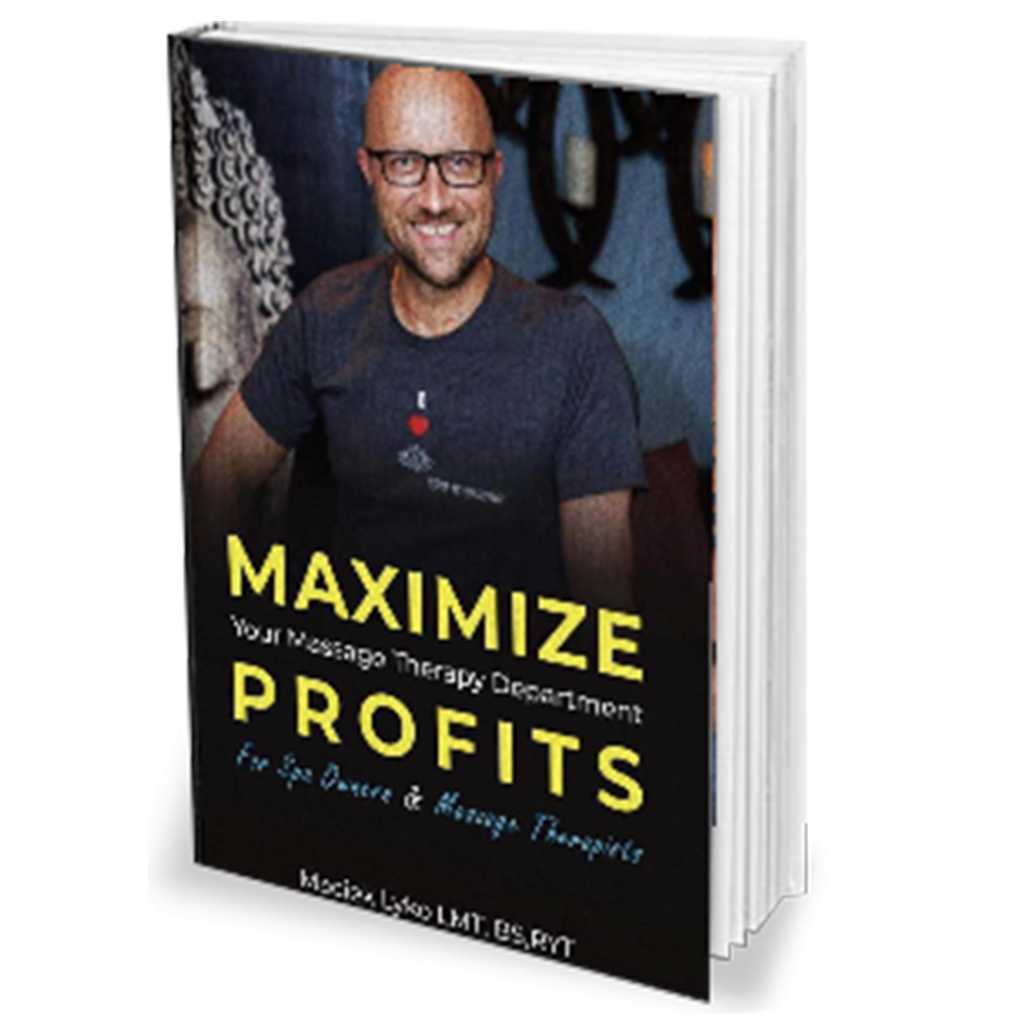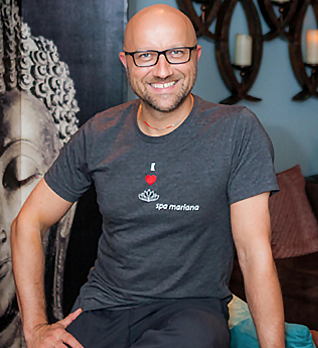MAXIMIZE Your Massage Therapy Department PROFITS

Overview of Book
Thank you for choosing this book! Whether you are a seasoned therapist, spa owner, or massage entrepreneur, my hope is that this book will find you well.
This book is designed to be a collection of strategies that readers can use for greater success. I am eager to share the skills and expertise I’ve learned through so many kind teachers, to whom I owe my deepest gratitude. Much of this content I am about to share with you is a study guide for you to follow. One point I want to make clear is that the journey you are about to take is not an easy one. It will require you to study, learn, and apply these principles so that you build a solid foundation for yourself as an individual, and for the success of your career in these fields. It takes a specific mindset and a great deal of patience to obtain steady success; so with 20 years of experience behind me, I’m here to share from my inspirational gurus, leaders, and guides to give you a hand. The knowledge they’ve shared was not theirs nor is the knowledge I teach mine. I ask you to also understand the importance of passing on this information to the next generation. There is true power when we share with others.
In this book, we’ll dive into the seven most highly-effective steps that I’ve found and used to build my first spa in Birmingham, Michigan, as well as to open my second day spa in Bloomfield Hills, Michigan. In conjunction with my most recent endeavor in the heart of South Africa at Pezulu Lodge, I was able to give the opportunity to teach a group of massage therapists how to perform a massage that goes beyond just relaxation–which is the title of my first book. What many massage therapists fail to understand is that while, yes, clients desire a good basic massage, it is really their energy, personality, thoroughness, and professionalism that truly sets them apart to leave their client with a great experience.

Founder and CEO of Spa Mariana
Maciek Lyko
Maciek Lyko, a well renowned internationally experienced massage therapist and the owner of the prominent spa chain, Spa Mariana; has been in the business for the past 25 years.

Overview of Book
I thought I had a decent massage program—until I read Maciek’s book. ‘MAXIMIZE Your Massage Therapy Department PROFITS’ showed me exactly where we were leaving money on the table. The 7 R’s Formula transformed the way my team engages with clients, and we’ve seen a 32% increase in rebooking and retail sales in just three months!
Jessica M.
Owner of Tranquility Spa, Colorado
This book is a goldmine for any massage therapist who wants to stop hustling and start thriving. Maciek breaks down exactly how to build trust with clients, deliver a five-star experience, and turn each session into a long-term relationship. I finally feel like a professional and not just a technician.
David R.
Licensed Massage Therapist, Florida
We implemented Maciek’s system from the book across all five locations of our wellness centers. The result? More confident therapists, higher client retention, and a measurable bump in revenue. This book should be required reading for every spa manager in the industry.
Linda S.
Spa Director, Harmony Wellness Group, California
